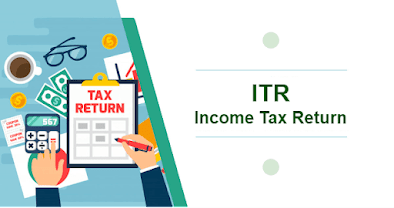Title: Common Mistakes in Filing ITR-1 for Salaried Individuals: Overlooking Additional Sources of Income
Introduction:
Filing an accurate Income Tax Return (ITR) is crucial for
salaried individuals to comply with the tax regulations and avoid potential
income tax notices or penalties. However, many individuals, either due to lack
of awareness or with unprofessional assistance, often overlook additional
sources of income while filing their ITR-1, such as interest from savings
accounts, fixed deposits, or gains from the sale of shares and mutual funds. In
this blog post, we will explore the repercussions of neglecting these sources
of income and provide guidance on avoiding such errors.
Understanding ITR-1 and Additional Sources of Income:
ITR-1, also known as Sahaj, is the most commonly used form
for filing income tax returns by salaried individuals. However, ITR-1 is applicable
only to individuals whose income includes salary, one house property, and other
income sources like interest income from savings accounts (up to a certain
limit) and agricultural income.
Repercussions of Overlooking Additional Sources of Income:
1. Incorrect Tax Liability: Neglecting additional sources of
income leads to incorrect computation of tax liability. The income from these
sources needs to be included in the total income, and taxes should be
calculated accordingly. Failure to do so may result in underreporting of income
and, consequently, an incorrect tax liability.
2. Income Tax Notices: The Income Tax Department has become
increasingly vigilant in identifying discrepancies between the income reported
in ITRs and the information available to them through various sources, such as
banks, financial institutions, and stock exchanges. If the department detects
unreported income, they may issue income tax notices seeking explanations and
initiating assessments, leading to potential penalties and interest.
Avoiding Errors in ITR-1 Filing:
1. Gather All Income Details: Ensure you have a
comprehensive list of all your income sources, including interest income from
savings accounts and fixed deposits, capital gains from the sale of shares and
mutual funds, rental income, or any other applicable income. Review your bank
statements, investment statements, and other relevant documents to collect
accurate information.
2. Use the Correct ITR Form: If you have income from sources
other than salary and house property, verify whether you should be using ITR-1
or another appropriate ITR form based on your income profile. Using the wrong
form can lead to incorrect reporting and potential complications.
3. Include All Income Sources: While filling out the ITR-1 form,
provide accurate details of all your income sources. Ensure you enter the
interest income from savings accounts and fixed deposits in the relevant
sections, and report the capital gains from the sale of shares and mutual funds
in the appropriate sections. If you have multiple sources, use the respective
schedules or annexures as required.
4. Seek Professional Assistance: If you are unsure about the
correct reporting of additional income sources or find the process
overwhelming, consider seeking professional assistance from a qualified
chartered accountant or tax expert. They can guide you through the process,
ensure accurate reporting, and help you avoid potential errors or income tax
notices.
Conclusion:
Accurately reporting all sources of income is vital when
filing your ITR-1 as a salaried individual. Neglecting additional income
sources, such as interest from savings accounts, fixed deposits, or gains from
the sale of shares and mutual funds, can lead to incorrectly filed returns and
income tax notices. By being diligent, gathering all income details, using the
correct ITR form, and seeking professional assistance if needed, you can ensure
the accurate filing of your ITR-1 and avoid any potential complications or
penalties from the Income Tax Department.


Comments
Post a Comment